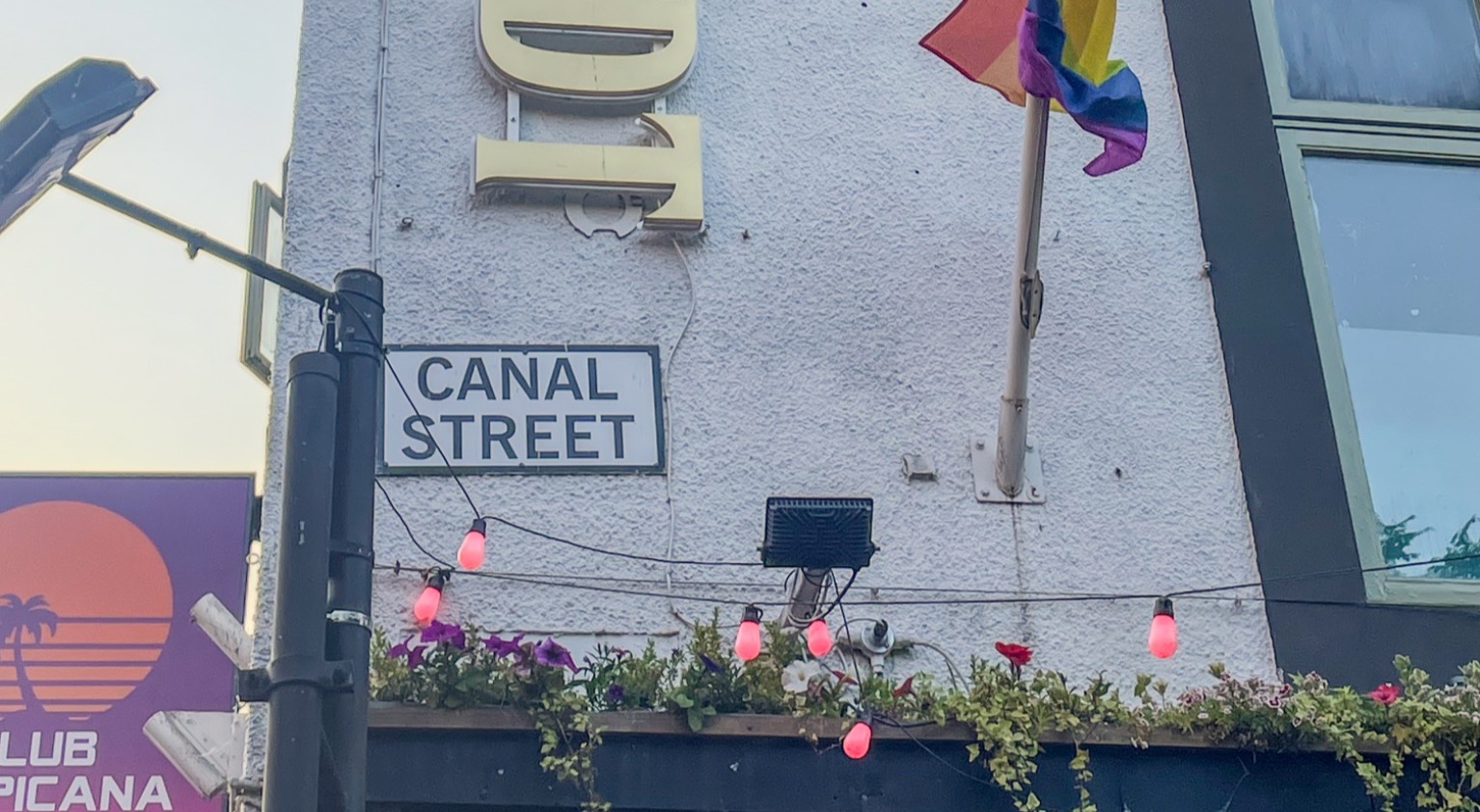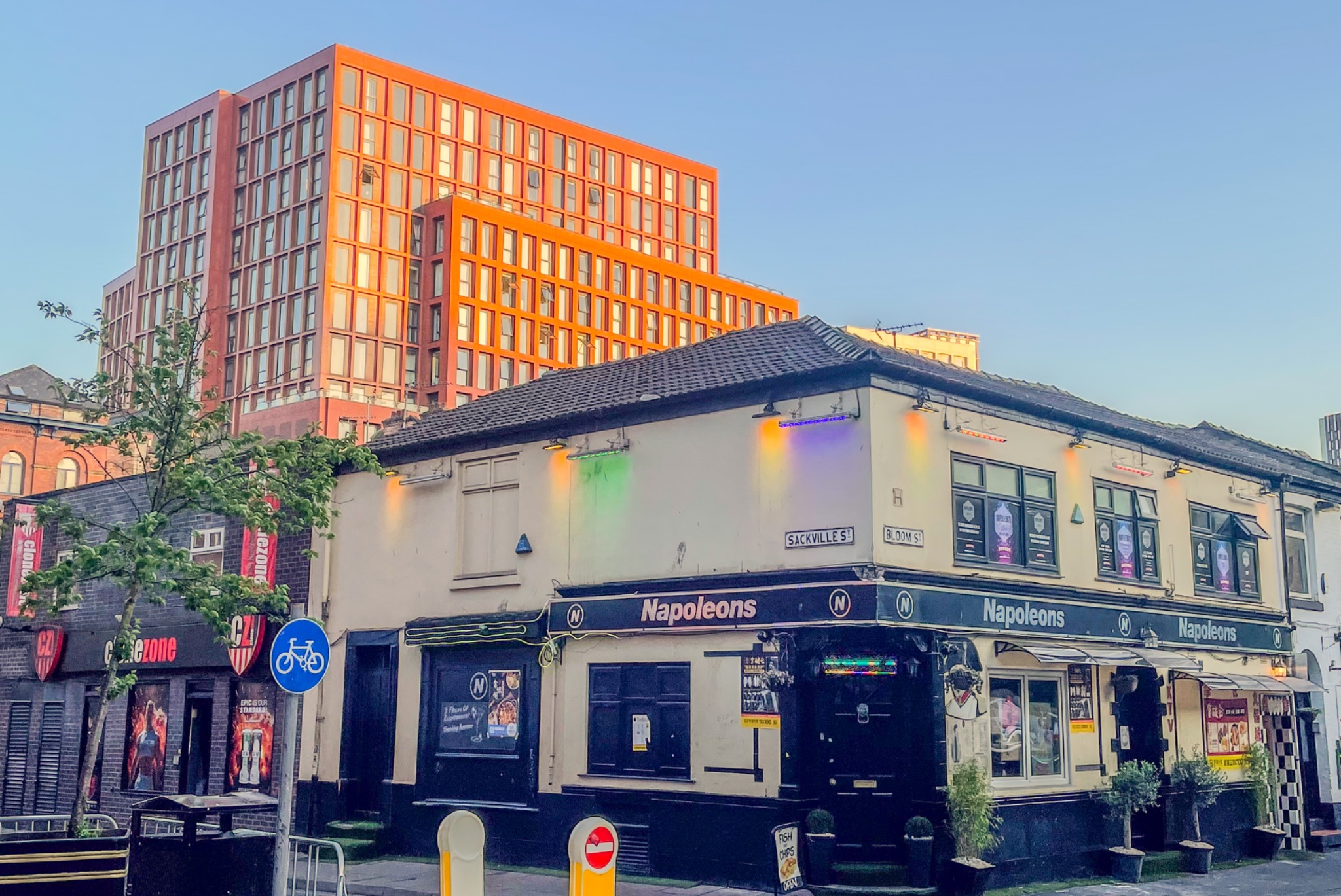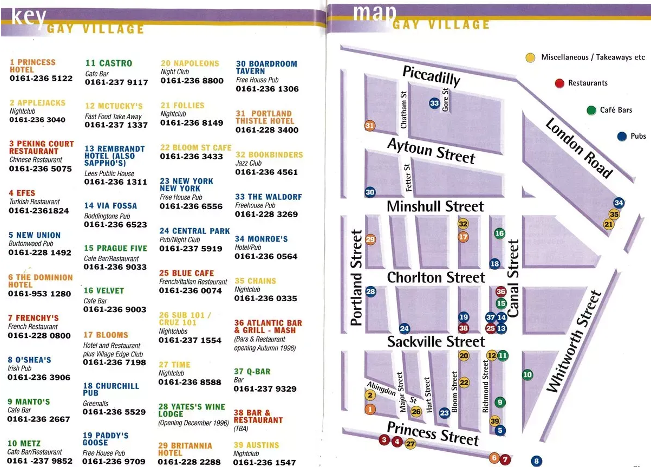
Where have the gays gone? Canal Street in Decline
From 2013 to 2024, the number of nightclubs in the UK has gone down by over 50%, says figures from firms NIQ and AlixPartners.
Young people in particular spend less on nightlife due to the cost of living crisis, and their connection to their local clubs and bars was damaged by the COVID-19 pandemic, which effectively closed the industry for months.
Research from UCL has shown that queer venues have been disproportionately affected by this decline in business.
And yet that same research showed resilience among a broader LGBT community, which has created and used temporary spaces within LGBTQ+ and non-LGBTQ+ venues for their partying.
In Manchester, we can see the same patterns of decline and resilience, which has resulted in a shift from younger adults away from Canal Street and towards a more dispersed range of venues which they occupy temporarily for certain club nights.
The Gay Village: Then and Now
Gay Village in the 90s was a gay Mecca, containing iconic venues such as Paradise Factory, Danceteria, and Manto. But they’re long since closed, and nowadays looming redevelopments have changed the character of the area.

“There is a consensus that new development is encroaching on the culture and identity of the Gay Village” Said the city council’s Gay Village Action Plan, published last year.
Furthermore, the usual gay bars of Canal Street with their largely white, gay male audience is the antithesis to what young people are after these days. They prefer what has been described as a “nomadic scene of club nights, pop-ups, and secret parties where queer, trans and racial minorities reclaim the night”
Rosy MacKinnob, 22, is a Manchester local who wouldn’t instinctively think of Canal Street as a place to go out:
“It’s for the gay men who hate women and the straight women who enjoy being one of the gays. They’re doing hen dos there and it’s like…why?”

This is a map from City Life in 1997 which illustrates the density of queer nightlife around the Gay Village in the 90s.
If you map out popular queer club nights among a younger (18-25) year old crowd today, the picture is remarkably different.
This desire among young people to avoid the mainstream gay spots isn’t necessarily new. It’s a phenomenon that goes back to the ‘90s at least. The Northern Quota spoke to Tom Rowe, researcher on an upcoming drama-documentary called Flesh and Flamingos, which puts queer nightlife of the ‘80s and ‘90s under a microscope
Flesh was a queer club night started at the Hacienda in 1991 which ran until 1996—compared to the commercial venues of Canal Street it was known as a place for very creative expression. What also set it apart from Canal Street was a strict door policy. People were being asked to kiss their friends in the queue for example, or name other queer venues. This meant that a lot of people who didn’t want to be out and visible on Canal Street felt safer.
The aesthetic of Flesh also allowed for a range of expressions of gender and different racial identities. This is really brilliantly captured in the photography of Stuart Linden Rhodes.
"I don’t think much has changed since the 90s. I think young people now want venues they can have an affect on, which they can change the aesthetic of, and Canal Street still doesn’t offer that.”
Post a comment